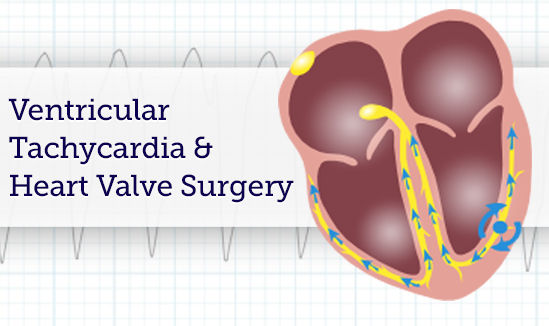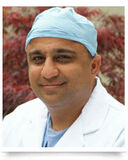Surgeon Q&A: Is Ventricular Tachycardia Common after Heart Valve Surgery?
Written By: Adam Pick, Patient Advocate, Author & Website Founder
Published: May 10, 2016
I just received a great question from Lisa about ventricular tachycardia and heart valve surgery. Lisa asked me, “I was born with tetralogy of fallot and had two heart surgeries before the age of 6. I just had my 3rd surgery at 46 to put in a pulmonary valve. Now, 3 years later, I’m being sent to a specialist to talk about ventricular tachycardia. Is this common with patients like me?”
If you didn’t know… Ventricular tachycardia (or V-tach) is a fast heart rhythm that starts in the lower part of the heart (ventricles). If left untreated, some forms of V-tach may get worse and lead to ventricular fibrillation, which can be life-threatening.

That said, I wanted to get Lisa an expert opinion on this very important question. So, I reached out to Dr. Joseph Rowe, a cardiac surgeon at Carilion Clinic in Roanoke, Virginia who has been in practice for over 15 years. So you know, Dr. Rowe has also successfully treated many members from our community including Bobby Broughman and Michael Sitka. 🙂
In response to Lisa’s question, Dr. Rowe first addressed the congenital nature of Lisa’s valvular defect:
I assume you had congenital heart disease, and were born with an abnormal pulmonic valve and/or other congenital defects that ultimately required pulmonic valve replacement. It would be helpful to know more about your specific diagnosis that lead to valve replacement. There are a variety of congenital heart defects associated with abnormal pulmonic valve function. The two most common are congenital pulmonic stenosis, which accounts for 8% of congenital heart defects, and tetralogy of Fallot, accounting for 5%. As surgical procedures for congenital heart disease have become more refined and successful, many more young patients are surviving into late adulthood.

Then, Dr. Rowe discussed irregular heart beats, also known as arrhythmias:
Arrhythmias develop in a significant number of adults who have survived decades after the original repair of their congenital defect. Atrial arrhythmias are much more common than ventricular arrhythmias, and depending on the specific congenital defect, there are clusters of associated common rhythm problems. Cardiac arrhythmias can be intrinsic to the structural heart malformation, usually related to enlargement of the cardiac chambers from the abnormal pressure and volume of blood flow in the heart. In pulmonic stenosis, the right ventricle can become hypertrophied or enlarged, and its pumping function can be compromised. Some repairs are also associated with making incisions into the heart, or placement of patches to enlarge the outflow of the right ventricle. Scar tissue can form and serve as a focus of abnormal rhythm development.
Next, Dr. Rowe addressed ventricular tachycardia:
The prevalence of ventricular tachycardia after tetralogy of Fallot repair has been estimated to be between 3% and 14% in large clinical series. Fortunately, the rate of sustained VT and sudden cardiac death is very low. Overall there is a general lack of objective guidelines primarily related to the low number of patients involved, making large studies difficult to perform. Treatment should be individualized and directed by a cardiologist with experience treating adults with congenital heart disease. Most adult patients who have survived a cardiac arrest or sustained VT are treated with an implantable cardioverter defibrillator (AICD). Symptoms of palpitations, dizziness, or syncope are usually evaluated with invasive catheterization to measure pressures inside the cardiac chambers, and electrophysiology studies to learn more about the abnormal electrical conduction occurring in the heart. Catheter ablation is a treatment based on eliminating the abnormal electrical conduction pathway or activity in the heart.
Lastly, Dr. Rowe acknowledged the commonality of ventricular tachycardia and potential next steps for the treatment of V-tach.
In summary: Yes, rhythm disturbances are common in adults with congenital heart disease. They rarely require another surgery, but can require placement of a defibrillator, or a catheter based ablation procedure. This requires treatment by an electrophysiologist, a special cardiologist with expertise in the electrical function of the heart.
Many thanks to Lisa for sending me this excellent question about ventricular tachycardia, congenital heart defects and heart valve surgery. In addition, I would like to extend a humongous thank you to Dr. Joseph Rowe for taking the time to share his clinical experience and research with our patient community.
Keep on tickin!
Adam













